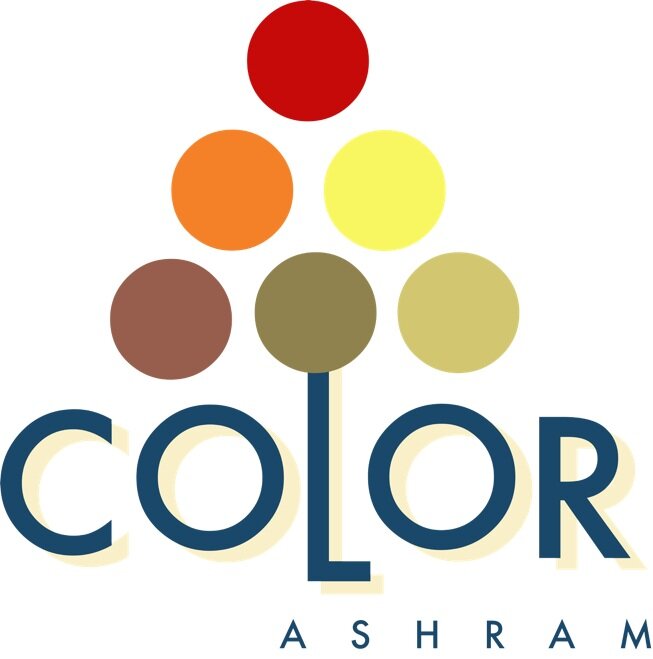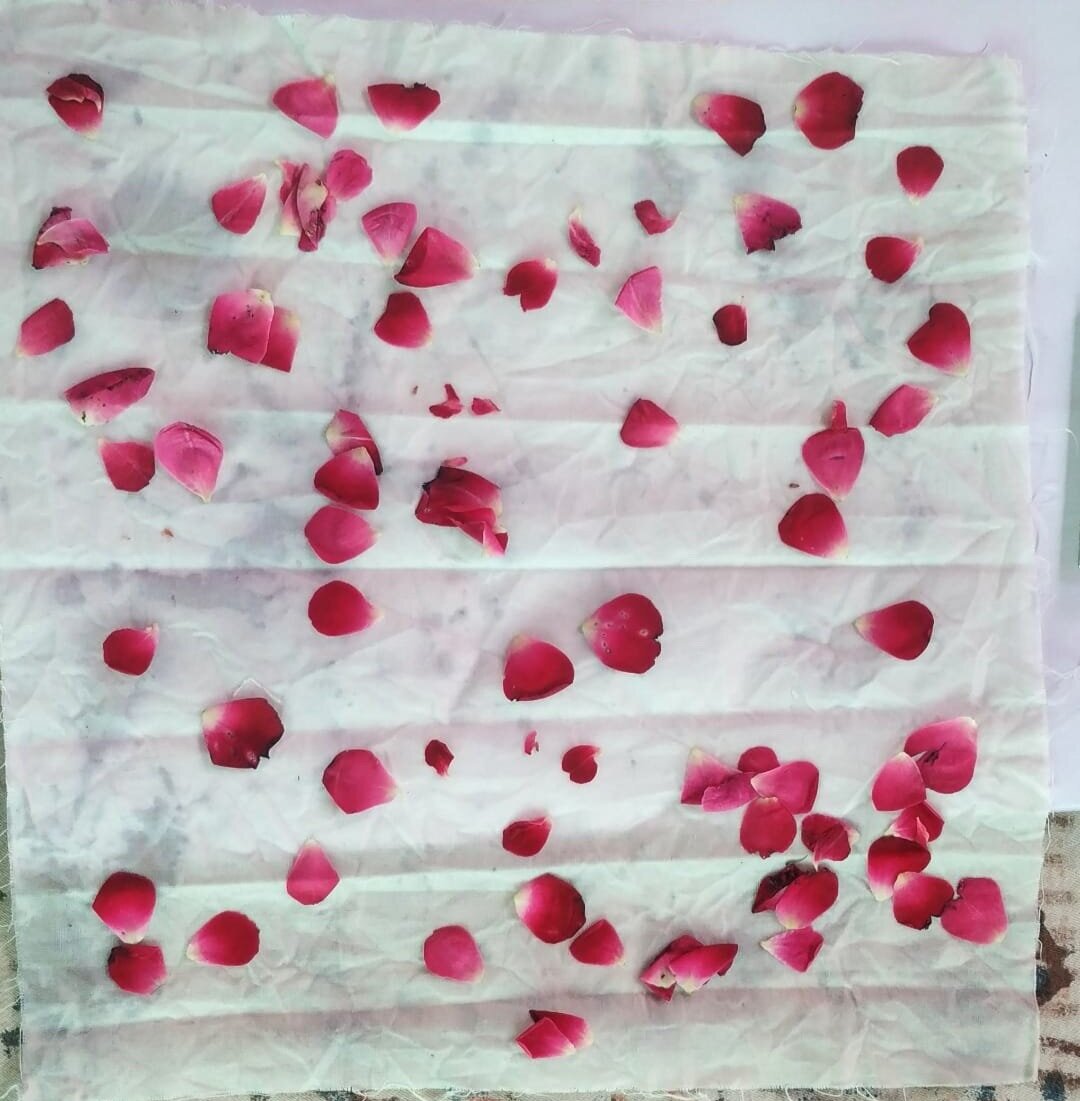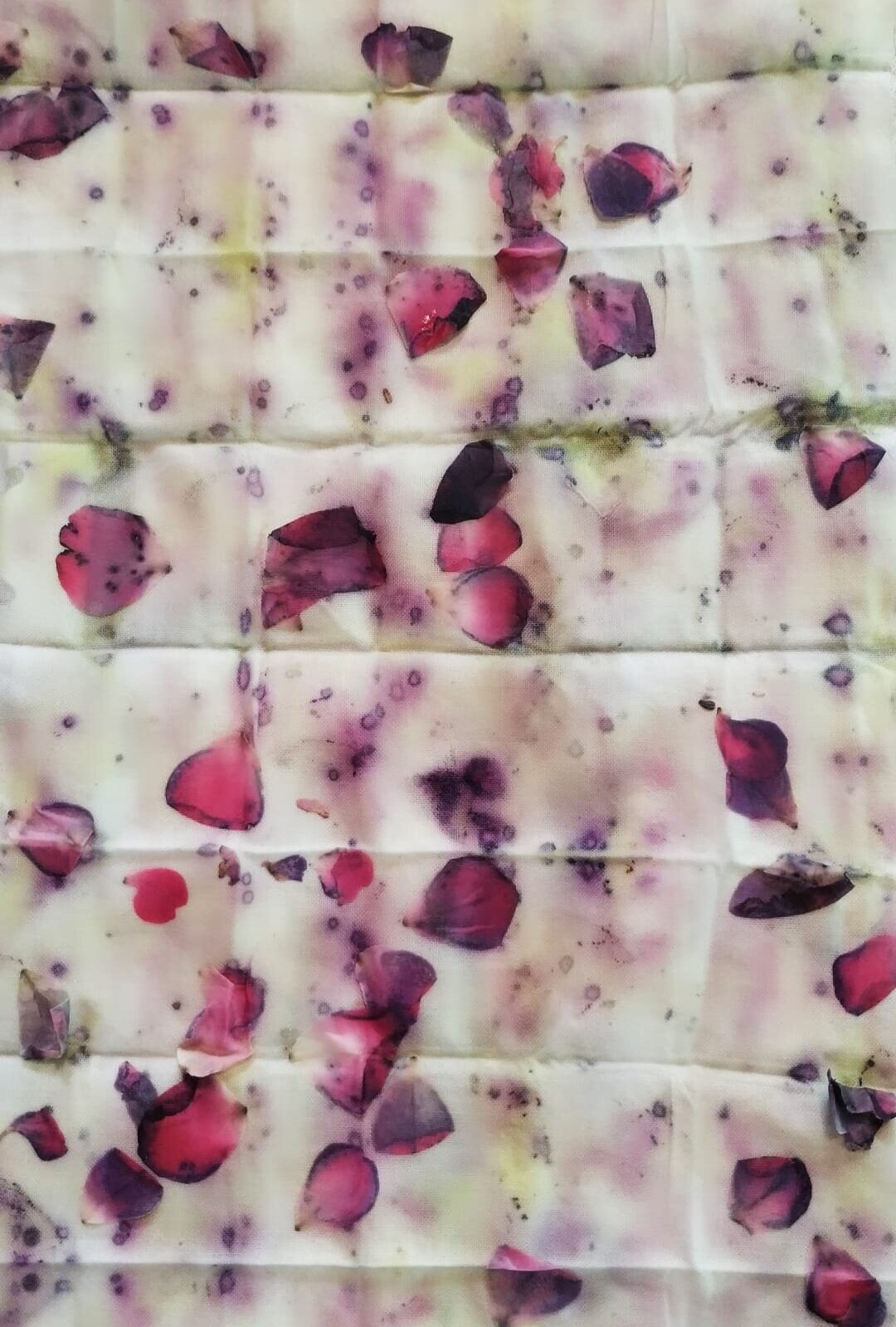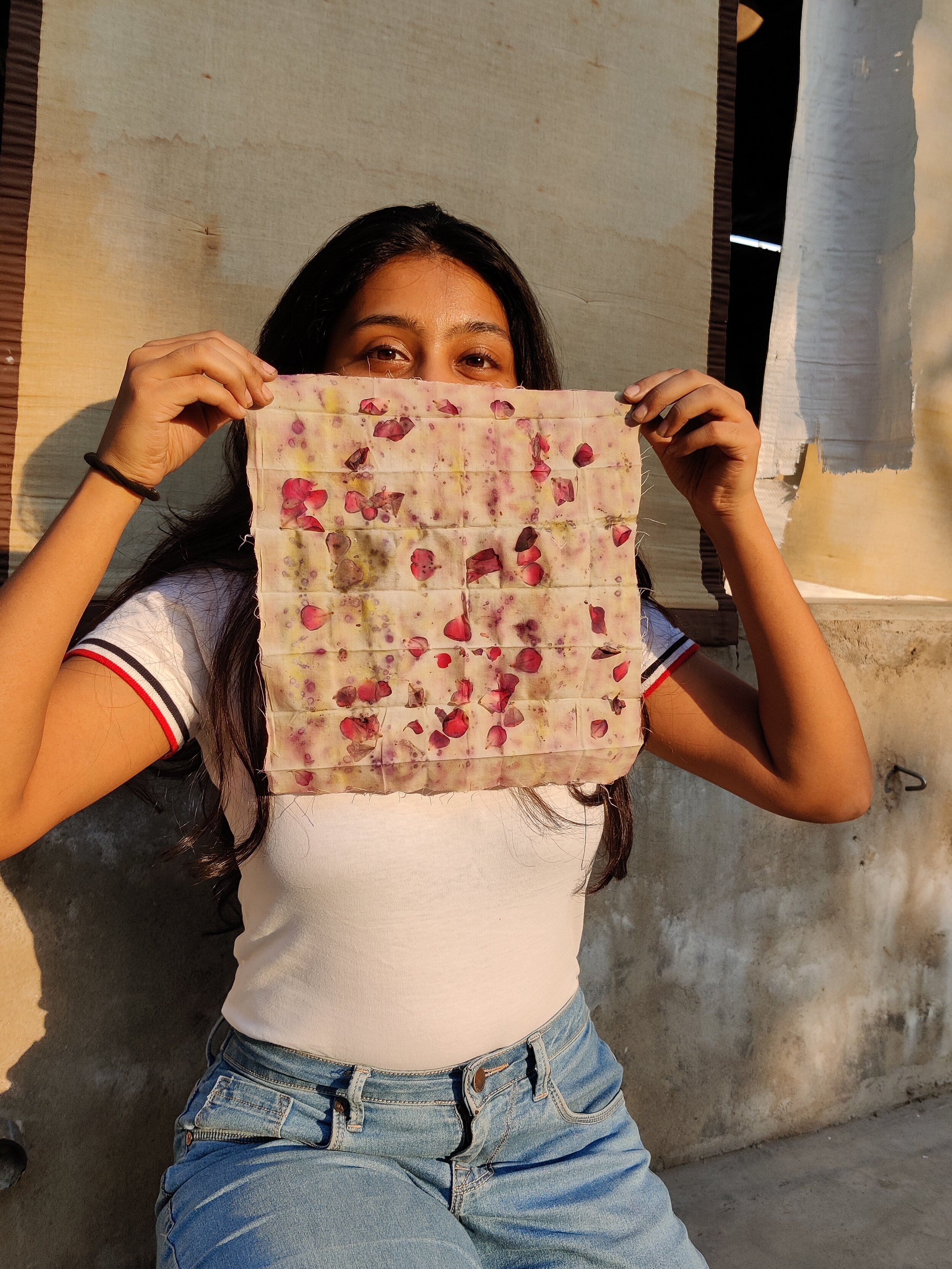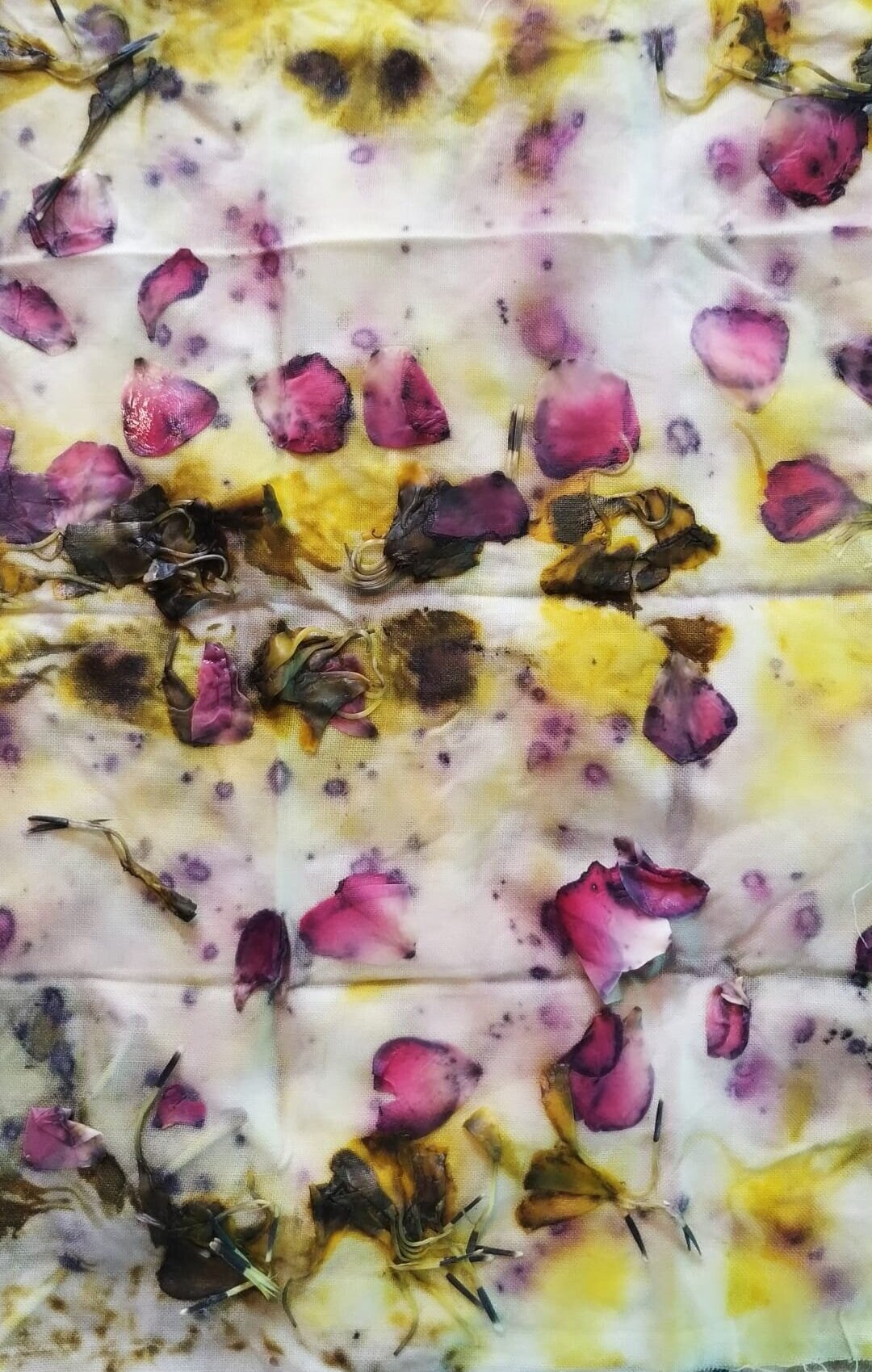Eco Dyeing
INTRODUCTION TO ECO DYEING
Eco printing or eco dyeing is a contemporary application of the traditions of natural dyeing. In eco printing or dyeing, plants are enclosed in textiles or paper, bundled by winding over rods or stacked in layers and then steamed or immersed in hot water to extract the pigments and produce a print made with plant dyes.
Significance of Eco Dyeing
The colors produced by natural dyes and pigments are vibrant. They are not only biodegradable but nontoxic and nonallergic too. This means that they are much better for the environment and for use around humans. It is easy to extract the natural color from plants, fruits, or flowers. Many natural dyes also have antimicrobial properties, making them safer for kids in particular. Additionally, natural dyes neither contain harmful chemicals nor carcinogenic components, common to artificial or synthetic dyes. By using natural dyes over these other choices, we are helping preserve the environment and lowering human dependence on harmful products. When toxic runoff and residuals from the textile manufacturing and dyeing process often end up in our delicate oceans, we should do all we can to ensure we are using the nontoxic alternative, natural dyes. Another interesting advantage of natural dyes is that they provide higher UV absorption in the fabrics they are used on. By wearing clothes dyed naturally, you are able to more fully protect your skin from the sun’s harmful rays.
Ingredients
Collect some flowers and leaves of various colors and get the fabric ready pre-washed and dried. Prepare alum dissolved in water and iron solution.
